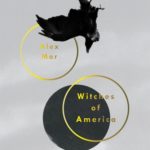I’ve spent the last couple of weeks reading through Twilight & History.
Before you roll your eyes and assign me to the category of “crazy Twilight weirdo,” please let me assure you that this is not a review of Stephanie Meyer’s Twilight Saga. Let me also assure you that I am a totally normal woman, in possession of enough good sense not to get swept up in a bunch of teen vampire silliness*.
I picked up Twilight & History randomly, thinking it was a history of how Meyer got her ideas, how she developed the characters, etc. I was a bit disappointed to see that the book wasn’t detailing that particular history, but I was also pleased to see what the book is actually about.
The book, a series of essays by various academics and authors, talks about real history through the lens of the Twilight Saga. Some questions answered include:
- Considering the history of the Quileute people, was Team Jacob always doomed?
- What would Jasper have experienced as a Civil War Soldier?
- Are the Volturi typical Italian Renaissance rulers?
- What was childhood like in seventeenth-century London, where Carlisle was born?
Like I said, this post is not actually a book review, but if you like history, and happen to be a fan of Meyer, I suggest you at least skim through Twilight & History. But for now, to the main purpose of today’s post!
History and Story
The Italian author and literary critic Umberto Eco is famous for saying that the books and movies that attract the biggest groups of fans are usually those that “provide a completely furnished world.” This gives readers and viewers the chance to really get into the story — to sink their teeth into and wrap their minds around it.
Two-dimensional characters, flat plotlines, and thin back stories drive most readers crazy. Generally the more multifaceted a story is, the more fun it is to read. Some authors can get a scoonch bit carried away sometimes, and that’s when you end up with ridiculously complex stories that make no sense. The point is to find a good balance between too much and not enough information.
Some Examples
Despite its flaws (and there are plenty), Meyer’s Twilight Saga does a pretty good job of being a fully developed world. The author knows just enough about real-world history to weave her own story into its cracks, allowing the saga to become more believable and realistic.
Of course Meyer isn’t the only one to do this. Below is a completely non-exhaustive list of authors and books that have seamlessly woven themselves into the tapestry of history (links will take you to previous blog reviews, in case you’re interested).
- Thursday Next series (Jasper Fforde)
- Little Women (Louisa May Alcott)
- The Xanth Trilogy (Piers Anthony)
- Impossible (Nancy Werlin)
- The Outlander series (Diana Gabaldon)
- The Scarlet Pimpernel series (Baroness Emmuska Orczy)
Each of these books (or series of books) does this weaving very well. So it is most definitely not a coincidence that I have enjoyed all of these books. Several of them are among my top ten favorites of all time.
But Why?
I’ve always enjoyed seeing history through the lens of fictional characters. I think this is because I love my favorite characters so much that I love reading almost anything they do/say/think about.
We in the real world have been affected by our histories, and the histories of those around us. What’s to stop Thursday Next, Jo March, Lucy Scarborough, and Sir Percival Blakeney from having been affected by history as well?
*TEAM EDWARD!!!
What are some books/stories you’ve read or movies/television you’ve seen that had a fully developed world? Did you like them because of that? Or did you hate them because they “mess up real history”?
Quick Announcement
Best Friend and I will be taking a road trip to South Carolina starting Saturday morning, so there won’t be any book reviews while I’m gone. But because I don’t want to leave you guys hanging, I’ll be cross-posting some blog entries I’ve been writing at work.
I’ve been working at a small web design/marketing/branding company for several months now, and they (like everyone else) have a blog. So this next Sunday (August 8th) and Wednesday (August 11th) I’ll be tossing up a couple of the blogs I’ve written for them.
Even at work, it’s all about storytelling.
I don’t know how great my Internet access will be, but if you’re interested in getting great tidbits about my trip in 140 characters or less, feel free to head over to my Twitter feed.
Have a great week, guys — I’ll be back Sunday August 15 with some fun stuff. Happy reading!






